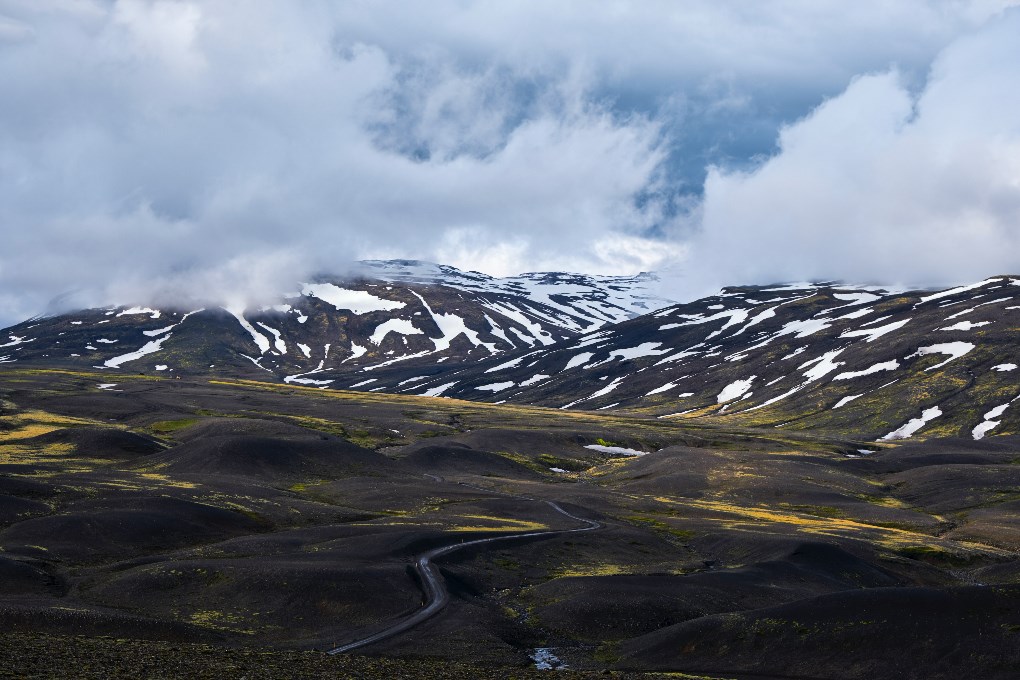
Table of Contents
- Where are the gravel roads in Iceland?
- What is it like driving on gravel roads in Iceland?
- Gravel road signs in Iceland
- Is insurance necessary to travel on Iceland’s gravel roads?
- What are Iceland F-Roads?
- What are the Most Popular F-Roads in Iceland?
- Less-Common Iceland F-Roads
- Iceland F-Roads Prohibited for All Rental Vehicles
- What kind of car do I need for driving F-Roads in Iceland?
- When are the F-Roads in Iceland Open?
- How long does it take to complete an F-road?
- Is it Difficult to Drive on the F-Roads?
- Tips to drive on Iceland's gravel and F-roads
- How to Cross Rivers on an F-Road in Iceland
- Will I Need Extra Rental Insurance to Drive on an F-Road in Iceland?
- What’s the difference between F-roads and off-road driving?
- Should I Drive the F-Roads in Iceland?
- Are Iceland F-roads worth it?
Planning a trip to drive the F-roads of Iceland or the Iceland Highland roads to explore one of the most remote areas of the country? Here’s everything you need to know about Iceland Highlands driving and F-roads driving in Iceland.
Keep reading to learn…
- What and where are the gravel roads in Iceland
- The most popular F-roads in Iceland (with maps!)
- How to drive Iceland’s mountain roads
- When you can access Iceland’s mountain roads
- Tips and advice for Iceland Highlands driving
- And the best options for renting a 4x4 car in Iceland!
Where are the gravel roads in Iceland?
Iceland has a lot of gravel roads. If you currently live in an area where there aren’t that many gravel roads, you may be shocked to see just how many gravel roads are in Iceland. To give you an idea, excluding Highland roads and secondary rural roads, about 20% of Iceland’s popular Ring Road route is gravel, or about 1,332 kilometres, or just over 800 miles.
Iceland’s gravel roads can be broken further down into two particular types of gravel roads.
First, some are just really short stretches of a gravel track. They’re not even necessarily a road. They’re more so just a short little detour that you can take to get to parking areas near scenic views and attractions. They’re easy to drive for most vehicles, and you just need to go slowly and watch for oncoming traffic.
Secondly, though, there are the F-roads, and those are much different. These mountainous roads are found typically in northern Iceland and in the Highlands. These are very long stretches of rough gravel roads that you have to take to reach some spots — there’s no other option. The F-roads are typically pretty narrow, in bad repair (with lots of rocks, potholes and divots) and usually include water crossings, and they can be challenging or even dangerous if you approach them without the right vehicle and precautions. In fact, it’s illegal to drive on Iceland’s F-roads in anything other than a 4x4 vehicle. For this reason, if you plan on going anywhere that there are F-roads during your trip, we’d encourage you to book a 4x4 rental car while in Iceland.
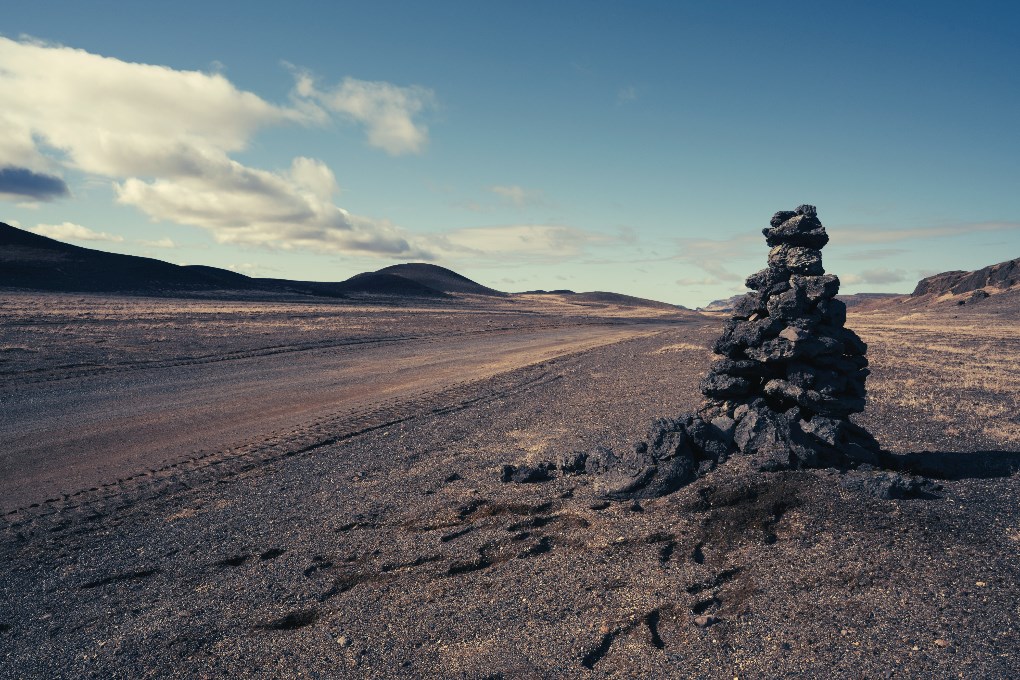
Think you’ll just skip travelling on or to any of the F-roads, to avoid the challenge? While that’s totally possible and there are many Iceland trip itineraries that don’t require you to travel on the F-roads, they’re still worth your consideration. The F-roads will take you to many beautiful spots and off-the-beaten-path attractions that you can’t see otherwise.
What is it like driving on gravel roads in Iceland?
Driving on Iceland's gravel roads is always an adventure! And, just like with any adventure, you need to take care to follow basic safety precautions as you enjoy the ride.
For example, when driving on gravel roads in Iceland, you might encounter wildlife or farm animals. Sheep, ducks and cows are common on the roads in rural Iceland, so it’s important to keep an eye out for any animals and to obey the posted speed limits.
Additionally, you’ll just need to be careful in general because the gravel roads aren’t smooth, are filled with rocks and are usually narrow. Paying attention and going the speed limit can ensure that you don’t run into any unfortunate accidents, as can watching for any oncoming traffic and being respectful of your fellow drivers.
But beyond paying attention and following the rules of the road, it can also be helpful to take the precaution of renting a 4x4 vehicle for your Iceland road trip. A 4x4 car will make your travel on the gravel and F-roads around the country both safer and more comfortable.
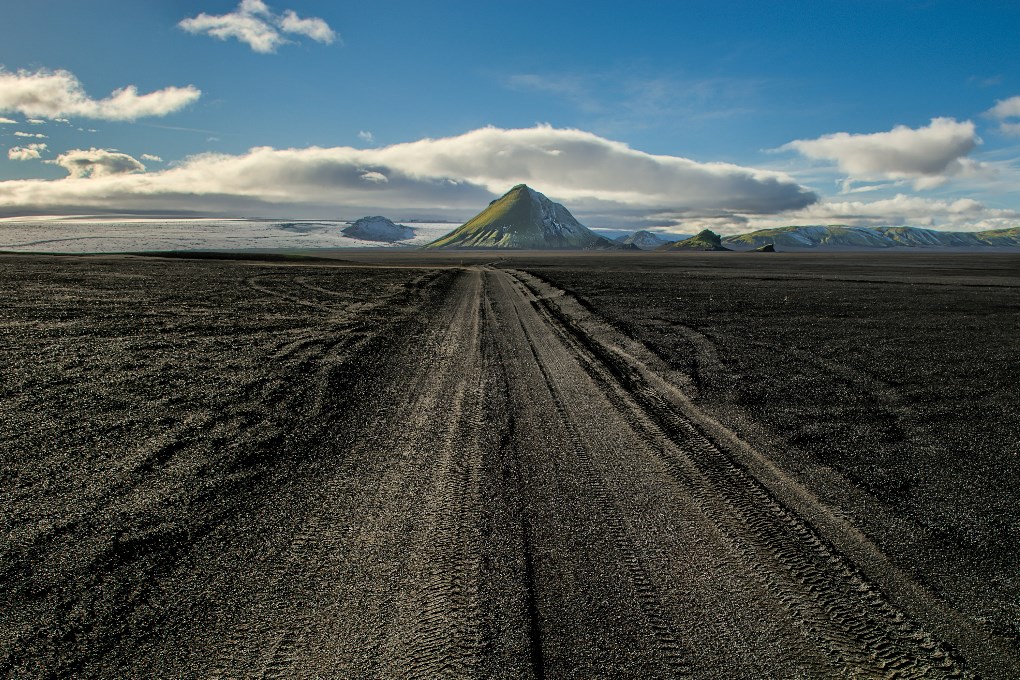
How to drive on gravel roads in Iceland
For the most part, driving on gravel roads in Iceland is easy — so long as you go slowly and carefully. Attempting to speed or go faster than necessary can make it all too easy to lose control of your vehicle. What do you do if this happens?
If you do go a little bit faster than the speed limit suggests and you lose control of your vehicle as it slides around in the loose rocks and gravel, you have to remain calm. If you’ve ever driven on an icy or particularly wet road and felt yourself lose control of the steering momentarily, you’ll want to respond similarly. Don’t jerk the steering wheel around. Don’t slam on the brakes. Instead, stay calm and gently guide the car in the direction in which you're sliding, as you press the clutch. This can help you regain control over the vehicle.
As for the speed limits, they can vary across Iceland depending on the road surface and environment. Whatever the limit in any particular area, though, do note that the speed limits are slightly below what’s considered the maximum speed for driving on that particular road in perfect conditions. You can feel free to slightly adjust your speed over the limit if the weather and road conditions are ideal.
In general, Iceland's speed limits are…
- 50 kilometres per hour or 30 miles per hour in urban areas
- 90 kilometres per hour or 55 miles per hour in rural areas on paved roads
- 80 kilometres per hour or 49 miles per hour in rural areas on unpaved roads
Be cautious, though — whatever the speed limit, if you feel the gravel moving beneath your tyres, you may need to slow down, as gravel can be flung up onto the car or windshield, which not only damages the vehicle, but also could cost you money if you don’t have the right rental car insurance.
Likewise, you always want to slow down if you’re approaching a blind corner or hill, just in case there’s a car in your lane that you can’t quite see. You don’t want to pop up behind them and then accidentally run into them. You also want to make sure that you’re staying well in your lane, especially in these blind corners, curves and hills, just in case there’s oncoming traffic that you can’t see. No one wants to experience a head-on collision during their holiday.
In Iceland, many bridges are single-lane, so if you find yourself approaching one of these, look out for oncoming traffic. If there’s oncoming traffic, the rule is that the first person to reach the bridge gets to cross it first. The other person must pull over to the side and allow that person to cross, before moving on. Whether or not you see any oncoming traffic as you approach a bridge, slow down before crossing, just in case.
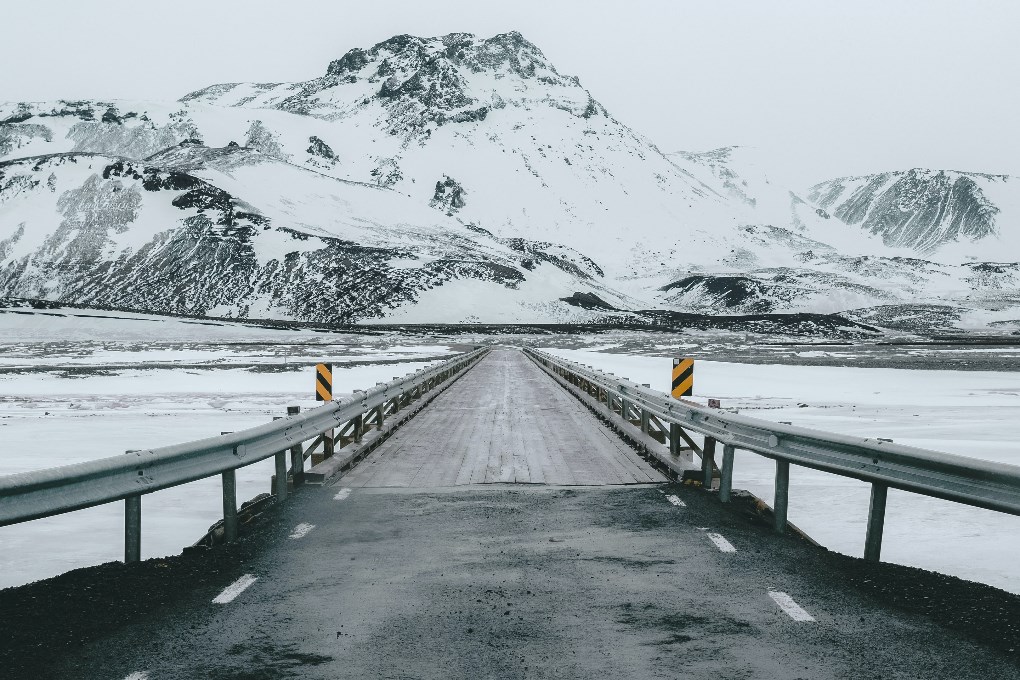
Weather and daylight can also impact your driving experience on Iceland’s gravel roads, and change how you should drive on them. In general, though, always check the weather forecast before you drive any long distance in Iceland and adjust your driving accordingly if the weather changes. Rain, snow, sleet and wind are all good reasons to slow down and, if any weather becomes too difficult for you to drive in, don’t feel as if you need to keep going. You can pull to the side of the road and turn on your emergency vehicle lights to alert other vehicles that you're stopped for the time being.
Additionally, check the sunset times before you set out on a drive, as you want to reach your destination before sunset; driving on unmarked gravel roads during nighttime can be particularly challenging and even hazardous.
One of the best things you can do to make sure that you have a successful driving experience on Iceland’s gravel roads, though? Simply plan ahead. Know your route and where you’re going, and make sure you know what types of roadways are on your route. Plan plenty of time to get from your starting point to your destination and leave in time for stops as well.
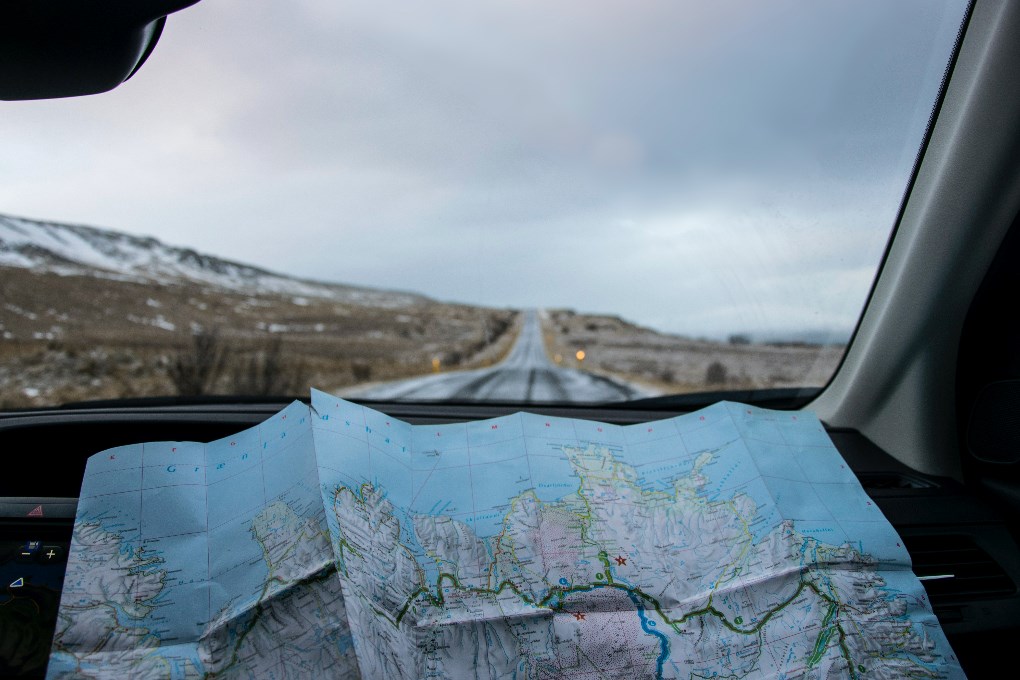
Gravel road signs in Iceland
Before travelling to any new country, if you plan on driving in that country, it’s smart to learn to recognise the road signs. Make sure that you’re able to recognise them on sight, so you can know what they mean when you come across them while driving.
Some, for example, will tell you to watch out for livestock, while others will tell you that the road will be switching from pavement to gravel. Knowing these signs can help you avoid car damage or even bodily damage that can result from an accident. If you see a sign that says the road is switching from pavement to gravel, you need to reduce your speed as that change is coming up quickly and hitting the gravel at a high speed can cause you to lose control of the vehicle. Similarly, a blind crest warning sign also requires you to slow down, so you can avoid colliding with another vehicle.
Learn to recognise Iceland road signs for:
- Speed limits
- Gravel roads
- Pavement changes to gravel
- Blind crest
- Sheep on the road
- Closed road
- Unbridged rivers
- Single lane bridge
- Icy road
Is insurance necessary to travel on Iceland’s gravel roads?
While car rental insurance is advised any time you rent a car in Iceland, it’s especially advisable if you plan on travelling anywhere that there are gravel roads or F-roads. This is because those F-roads and gravel roads are typically in not-great condition, meaning it’s more likely that you might experience car damage while travelling on them.
For example, that loose gravel can easily fly up and hit your car, cracking the windshield or damaging the paint job. You could also hit a pothole and end up with a flat tyre. Or, you could find yourself attempting a water crossing and your vehicle is washed away. Lots can happen on the unpredictable F-roads and gravel roads of Iceland, so it’s best to be prepared with the right insurance (though do note that no rental car insurance will cover you in the event of damage from a river crossing or off-road driving — if you come to a river crossing without a bridge, you may want to find another route; find more info on that below).
Lava Car offers several insurance packages that can be helpful when driving the F-roads. Gravel protection is an add-on to your basic insurance plan that will cover damage caused by gravel from the road flying up and hitting the car’s windshield, headlights or body. However, you can also upgrade to Lava Car’s Platinum, full-insurance package, for even more coverage, no matter what happens while you’re driving around the island. (And remember — even if you think you can handle the cost of covering a little bit of car damage, vehicle repairs in Iceland can be much more expensive than what you’re accustomed to, making the insurance even more valuable.)
What are Iceland F-Roads?
First things first, if you’ve never been to Iceland before, you likely have no idea what an “F-road” even is. “F-roads” is short for “Fjallvegur roads”, an Icelandic term that simply means an Iceland mountain road. So, as you could probably guess, F-roads will lead you to all of Iceland’s most mountainous and remote landscapes. You can easily identify F-roads by the road signs that feature an “F” and a number.
While Iceland’s F-roads will definitely take you to some of the most beautiful sites throughout the country, they can be dangerous if you’re not prepared for them, or if you visit during certain times of the year. F-roads are always unpaved and filled with gravel, sand and stones, and sometimes they even go through rivers (with no bridges!). That’s why, when we talk to Lava Car Rental customers renting a car for an Iceland road trip, we only recommend they travel along the F-roads if they consider themselves confident, skilled drivers.
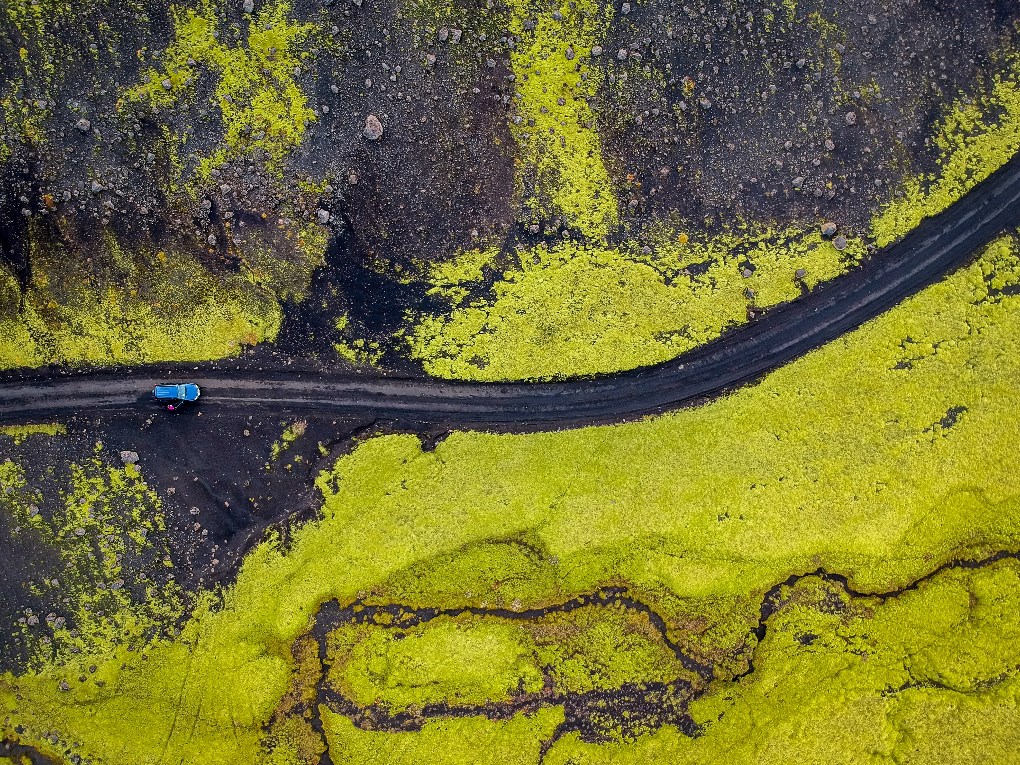
No matter how confident a driver you may be, though, you’ll definitely need to have a 4x4 rental car for the F-roads, with high ground clearance, to ensure you don’t end up stranded. In fact, 2WD vehicles aren’t even permitted on F-roads for this reason. The F-roads are also closed throughout the winter months (but more on that later).
Will I need to drive on the F-roads in Iceland?
If all of the above has you worried, don’t fear. Many travellers don’t even need to get on the F-roads at any time during their visit.
If you plan on travelling the Ring Road (Iceland’s most popular road trip route), the Golden Circle or the South Coast, you won’t be travelling along any F-roads. Instead, F-roads take you to more inaccessible, and more remote areas around Iceland. There is a lot to see along them, but you don’t necessarily have to travel them in order to enjoy a full, authentic Iceland holiday.
Just note: If you plan on visiting the Icelandic Highlands during the summer, you will need to take a detour and drive along the F-roads at some point in your journey.
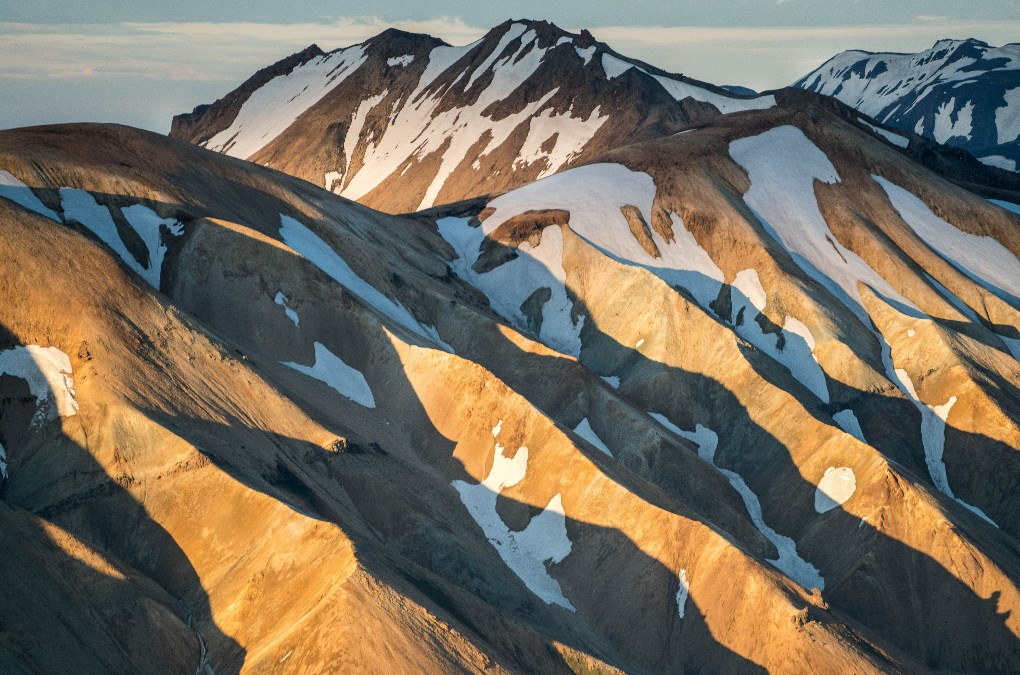
What are the Most Popular F-Roads in Iceland?
If, however, traversing these adventurous roads sounds like exactly your type of travel experience, we have a few recommendations.
The F-roads to Landmannalaugar
Landmannalaugar is an area filled with hot springs, canyons and vibrantly coloured hills, and it’s an area only accessible via the F-roads. In order to travel through the Fjallabak Nature Reserve to see the area, you’ll want to take one of three routes.
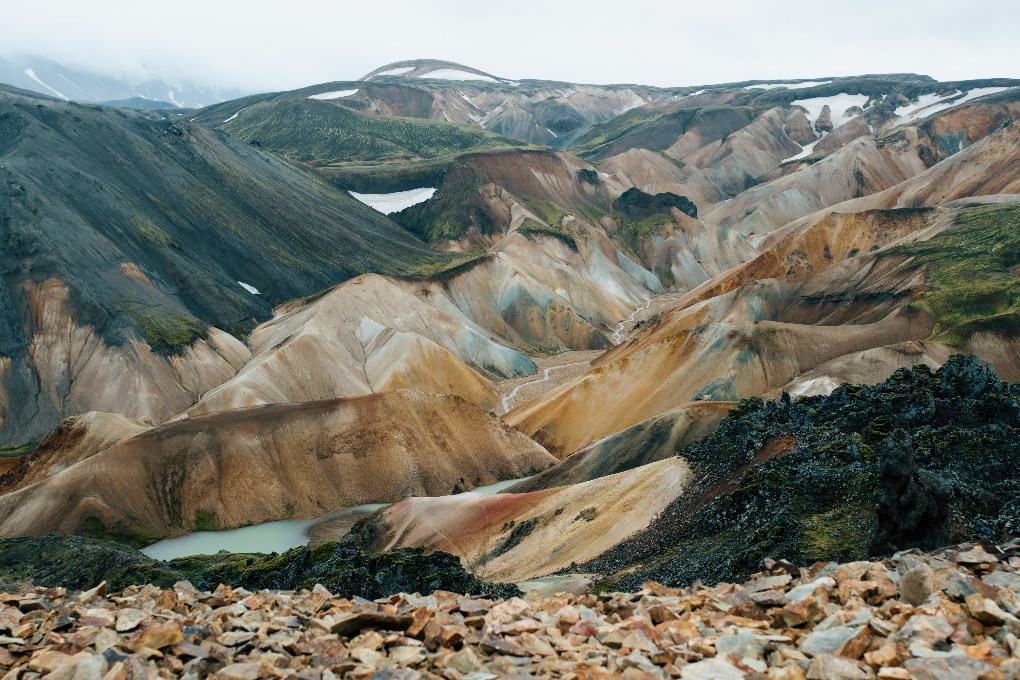
- The North Route
The north route to Landmannalaugar is best if you’re travelling from South Iceland or the Golden Circle. Take Route F26 from Route 1, turn right onto F208 South and take the road to F224 to Landmannalaugar. This route is easiest, as it’s partially paved, though there are about 26 kilometres of unpaved road. There are no river crossings, but you’ll still need a 4x4 vehicle (though a smaller 4x4 vehicle will do).
- The Middle Route
The middle route is a little harder, but not too bad. You’ll take Route 26 to F225, before turning right on F208 and then taking F224 to Landmannalaugar. This route is rougher, with a few river crossings (none that are too big), and the route has the benefit of allowing you to see the Hekla Volcano on the way. You’ll need a large 4x4 vehicle for this route.
Just note that there’s a short final detour to reach the main Landmannalaugar area from F224. There’s a parking lot right before the last two river crossings, and you can park there and walk the rest of the way.
- The South Route
The south route is the most difficult of the three options for taking the F-roads to Landmannalaugar, but many travellers enjoy it for its many scenic vistas. You’ll take F208 off the Ring Road and follow it all the way to Landmannalaugar. You’ll cross small-to-large rivers and need to drive around rocks, potholes and other obstacles in your way. Still, if you’re up for it, this route can be done with a large 4x4 vehicle, though it’s not safe after heavy rains.
F35 to Kjalvegur
Taking the F35 to Kjalvegur takes you from Gullfoss waterfall, in the Golden Circle, all the way to North Iceland via the second-longest F-road, over nearly 200 kilometres. F35 is the most popular F-road in Iceland and one of the easier F-roads to drive. There are no river crossings and the route is suitable for any 4x4 vehicle.
For great views during your drive, take a small detour to Hveravellir, where you’ll find hiking and hot springs, or Kerlingarfjoll, where you’ll find a handful of restaurants.
F550 to Kaldidalur
This is another easy F-road route for any 4x4 vehicle, with no rivers to cross. One of Iceland’s oldest and first permanent roads, this is the shortest F-road, at only 40 kilometres. It’s all gravel and will take you along the Geitland Nature Reserve, where you’ll find lava fields and glacier caves.
F206 to Lakagigar
This Iceland F-road is popular if you’re travelling to the Laki Craters, the most famous volcanic fissure in South Iceland. It’s only visible on local maps (sorry, Google!) and F206 takes you straight to F207, which then takes you to the Laki Craters. There is a deep river crossing along this route, so you’ll want to only drive a raised 4x4 vehicle if you choose to take it. You also won’t want to travel the route after heavy rain.
F249 to Thorsmork
If you’re trying to reach Thorsmork Valley Nature Reserve, which is situated between three glaciers, you’ll want to be careful. This area is notorious for damaging tourists’ rental cars. In fact, the Krossá River crossing along the route is likely the largest river crossing you’ll find on any F-road in Iceland. If you don't feel comfortable risking your safety and that of your car during this river crossing, you can take a shuttle service that crosses the river for you.
F26 to Sprengisandur
For more desolate and treacherous terrain, you can travel another one of the longest F-roads in Iceland. F26 to Sprengisandur is 232 kilometres and runs between two glaciers, connecting North and South Iceland.
You absolutely need a raised 4x4 vehicle when on this road, and you need to prepare ahead very well, as there are no gas stations and no cell service along the road. There are multiple river crossings and a lot of obstacles.
Less-Common Iceland F-Roads
If you didn’t think you could get more off the beaten path than the above F-roads, think again. Here are some of the even less-common Iceland F-roads.
F66 to Kollafjarðarheiði
F66 to Kollafjordur Heidi is the only road that crosses the central Westfjords and directly connects the northern and southern Westfjords. There are a few small river crossings along this route.
F88 to Oskjuhlid
This is likely the shortest and quickest way to reach Askja (and it also connects the Ring Road to F910), but it’s also the most difficult route to Askja, as it includes several large river crossings. It’s definitely not recommended for unskilled drivers and is best suited to drivers who have prior experience with river crossings.
F210 to Fjallabaksleid Sydri
This road goes between Thorsmork and Landmannalaugar. It’s very remote, with minimal maintenance, and includes several river crossings.
F233 to Alftavatnskrokur
This route is often used as a shortcut between F210 and the northern part of the F208 South road. It features some very difficult river crossings.
F347 to Kerlingarfjallavegur
This is a detour off of F35, with river crossings, steep roads and rugged terrain.
F905 to Arnardalsleid
This is an easier way to reach Askja (at least compared to F88). The route connects you to F910, which you’ll have to drive on no matter how you reach Askja. It includes two medium-sized river crossings.
Road 643 to Strandavegur
This is the only road that allows you to visit Krossneslaug Hot Spring. While it’s not officially an F-road, it’s still really only doable with a 4x4 vehicle.
Iceland F-Roads Prohibited for All Rental Vehicles
If you’re travelling to Iceland as a tourist, chances are you’ll be renting a vehicle for getting around the island. If that’s the case, there are a few places you shouldn’t go.
The following F-roads are all absolutely off-limits for all rental vehicles, no matter what kind of vehicle you’ve rented. These roads are too treacherous and damaging for most vehicles, and damages will not be covered by insurance.
These roads include:
- F-Road F622 in the Westfjords
- F-Road F337 to Thjofahraun
- F-Road F578 to Arnavatsheidi
- F-Road F210 around Myrdalsjokull
- F-Road F26 through the Highlands
- F-Road F910 Oskjuvatnsvegur
- F-Road F980 Kollmuluvegur
- F-Road F249 to Thorsmork
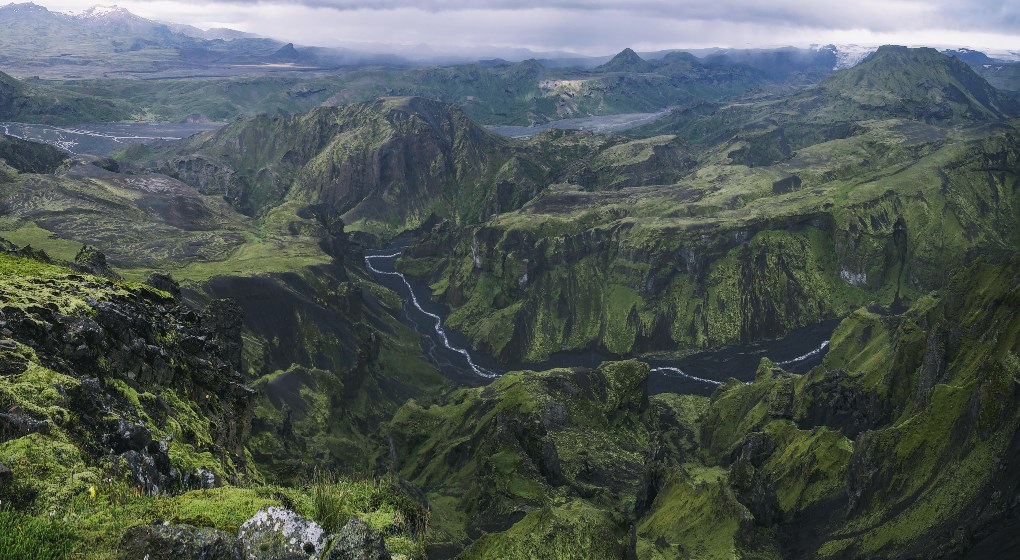
What kind of car do I need for driving F-Roads in Iceland?
As mentioned, you’ll need a 4x4 vehicle for driving Iceland’s F-roads (as well as many roads in the northeast and in the Westfjords) and it’s illegal to drive a 2WD vehicle on the F-roads in Iceland. Furthermore, most Iceland car rental providers, they’ll let you know at the time of booking whether or not a vehicle is suitable for the F-roads, as sometimes, even some 4x4 cars can’t handle them, especially if they require river crossing. Beyond this, though, you may want to choose your 4x4 rental car for Iceland more carefully, depending upon which F-roads you want to travel on.
For example, a small 4x4 vehicle like the Dacia Duster is suitable only for F-roads without river crossings, including the F208 from the north to Landmannalaugar and the F35 Kjölur Road to Kerlingarfjöll. A small 4x4 vehicle will keep you safe and comfortable, but do note that the small size makes these vehicles not ideal for groups, or for those travelling with lots of luggage.
A mid-size 4x4 vehicle like the Nissan X-Trail is more suitable for those F-roads that do have small water crossings. These F-roads might include the F910 to Askja, the F225 west of Landmannalaugar or the F26 to Sprengisandur.
However, if you plan on travelling on F-roads with more substantial river crossings, you’ll need a larger 4x4 vehicle, like the Toyota Land Cruiser, which will give you enough height to cross waterways safely. F-roads that require this type of vehicle include the F88 to Askja, the F249 to Þórsmörk and the F578 to Arnarvatnsvegur.
At Lava Car Rental, we have a wide selection of 4x4 cars with Highland capabilities.
Again, it’s absolutely prohibited to drive any 2WD vehicle on Iceland’s F-roads, under any circumstances. Doing so will result in a high fine and no insurance coverage for any ensuing damages.
What types of campervans can go to the Highlands?
Think that because campervans are usually a little bit larger and bulky that they can’t handle the Highland roads of Iceland? Think again. Lava Car offers 4x4 campervans like the VW Transporter that can help you traverse the F-roads safely and conveniently from the comfort of your own little accommodations option on wheels.
When are the F-Roads in Iceland Open?
It’s important to note that Iceland’s F-roads are not open all year long, due to weather conditions and safety. They close during the winter months, as the snow and ice make them impassable. Furthermore, since things like weather and road conditions vary from year to year, the F-roads don’t necessarily open on the same day every year and all of the F-roads do not open at one time. The roadways are opened little by little through the season, as conditions make it possible.
In general, you can expect the F-roads to begin opening sometime in May, with the most opening in June, and a few stragglers finally opening in July.
Very similarly, the F-roads don’t have a particular closing date and will close entirely based on weather and road conditions.
Because of this, if you do want to do an F-road or Highlands road trip around Iceland, it’s best that you visit in peak summer, for your best chances at having all of the roads open and available to you.
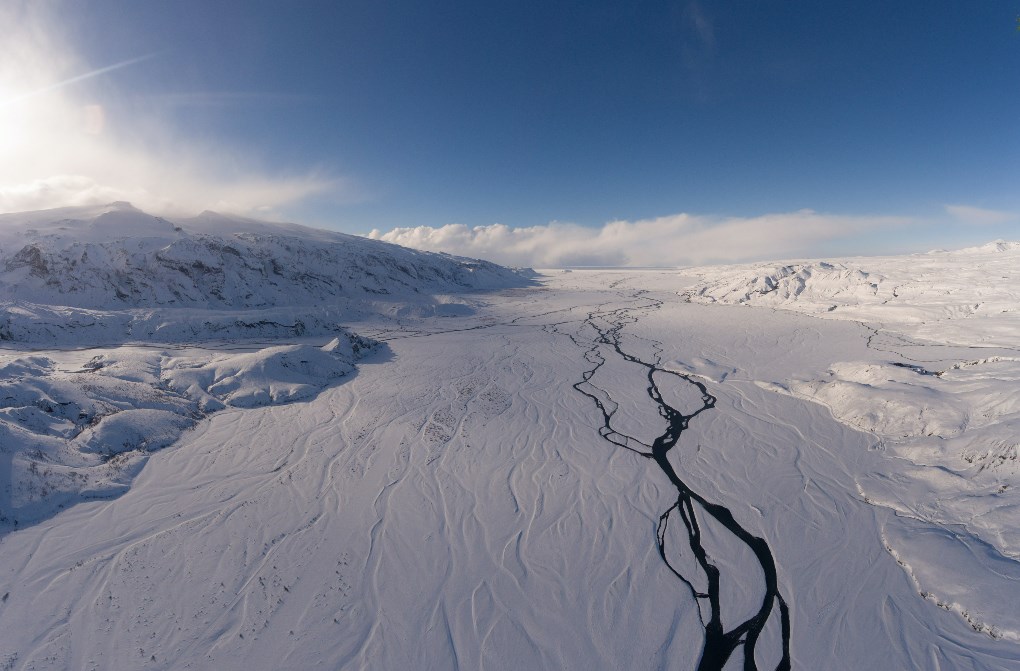
For up-to-the-minute information on F-road closures and conditions, visit road.is and safetravel.is.
How long does it take to complete an F-road?
So you want to pick an F-road to travel during your trip to Iceland? How long it’ll take you will really vary according to a few factors, not least of these being which F-road you decide to drive. The longest F-road, for example, is F26, which, under perfect driving conditions, takes about five hours from end to end. Plenty of shorter F-roads exist, though, that can take as little as half an hour.
Other factors that will influence how long it takes you to get from one end of an F-road to the other, include the weather, how comfortable/confident a driver you are, any river crossings and any delays and traffic you might run into. In general, though, you can trust the Google Maps estimate as to how long it’ll take you to traverse an F-road.
Is it Difficult to Drive on the F-Roads?
Whether or not you feel driving on the F-roads is difficult will depend on a few things. If you’re a very confident and skilled driver, chances are likely that you won’t feel all that uncomfortable on the F-roads. However, if you’re a very skittish driver who isn’t that sure of their driving skills, you may find the F-roads extremely challenging.
The F-roads themselves also differ, so you may find some to be easy and some to be difficult. Some are relatively smooth and worn down, so you can drive on them at up to 80 kilometres per hour (49 miles per hour) quite easily. Others are very steep and rocky, while still others feature water crossings. Changing weather and rising water levels can also influence a road’s conditions. All of these factors can impact whether or not you think driving the F-roads are difficult or easy.
But whether or not you think driving on the F-roads is difficult, it’s imperative to concentrate and remain alert at all times.
Tips to drive on Iceland's gravel and F-roads
For many drivers it is difficult to drive along Iceland’s F-roads, but not impossible. Some general tips to make the journey as easy as possible?
- Never drive the F-roads solo, in case you run into problems
- Acclimate yourself to your rental vehicle before you drive the F-roads
- Drive slowly
- If you’ve never crossed a river in a vehicle before, don’t try it for the first time on an F-road
- Check your car’s safety features, such as tire pressure, before you start your trip
- Submit your travel plans to safetravel.is before you hit the road
- Monitor weather and road conditions via vedur.is and road.is
- Check vegasja.vegagerdin.is/eng/ for the most up-to-date maps
- Be sure to have a full tank of fuel and a filled, spare fuel can before driving an F-road, in case you don’t come across a fuel station when you need it
- Also, take along an emergency driving kit outfitted with food and water
- Make sure your phone is charged and working before you drive an F-road, and download your maps for offline usage, in case you lose your cell signal
- Don’t drive off-road under any circumstances (it’s illegal in Iceland!)
How to Cross Rivers on an F-Road in Iceland
If you’ve crossed a river in a vehicle before and feel confident that you can do it again in Iceland, you still want to proceed with caution.
Before crossing a river on an F-road, stop and take a look at the river. Is it deep? Is the current strong? You’ll want to avoid a crossing, at least at that moment.
If it’s not deep and the current doesn’t appear too strong, you’ll want to put your vehicle in 4x4 mode and then follow other drivers’ tire tracks into the river. Once in the water, keep a consistent speed, don’t stop and don’t change gears.
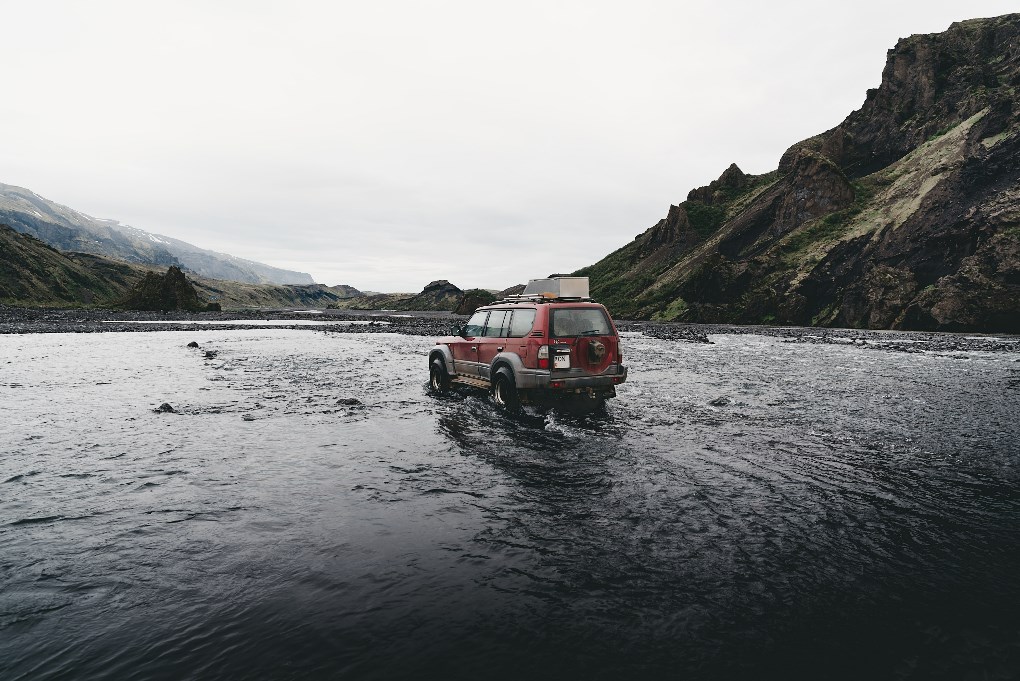
Will I Need Extra Rental Insurance to Drive on an F-Road in Iceland?
In most cases, yes, you’ll need extra car rental insurance to drive on F-roads in Iceland. This is because most rental car agencies in Iceland do not automatically provide insurance for a vehicle’s undercarriage or insurance that covers water damage.
You’ll likely want to purchase additional gravel protection and a super collision damage waiver, to protect you from the most common F-road vehicle damage. And trust us — it’s much more affordable to pay for the extra insurance than it is to pay to fix the ensuing damage.
Check out Lava Car Rental’s insurance options to learn more about the available coverage.
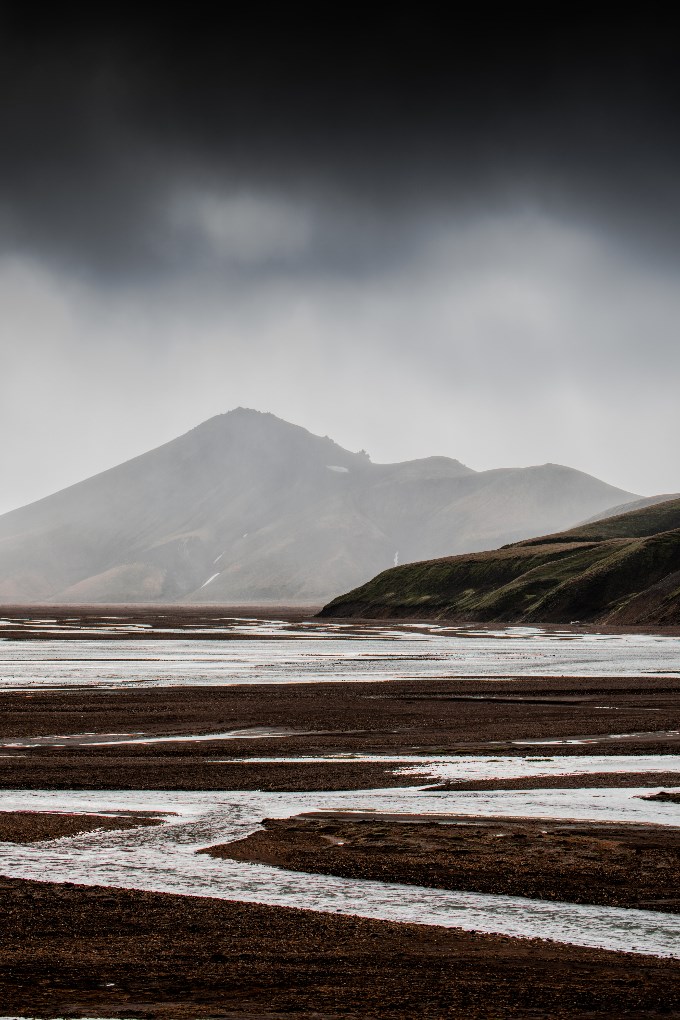
What’s the difference between F-roads and off-road driving?
In some areas of the world, “off-roading” refers to driving off of any paved road. In some areas, driving off the road is perfectly legal. That’s not the case in Iceland. In fact, off-road driving in Iceland can cause serious ecological damage and result in heavy fines for you, the driver.
So, when you're in Iceland, be sure to not mistake an off-road area for an F-road. F-roads are always marked with an “F” and clearly labelled, both on maps and via roadside signage.
Can You Drive Off-Road in Iceland?
No. Off-roading in Iceland is absolutely against the law. No matter the terrain, vehicles can cause long-term damage to Iceland’s delicate ecosystems. If you’re caught off-roading while in Iceland, you could receive a heavy fine and/or a jail sentence.
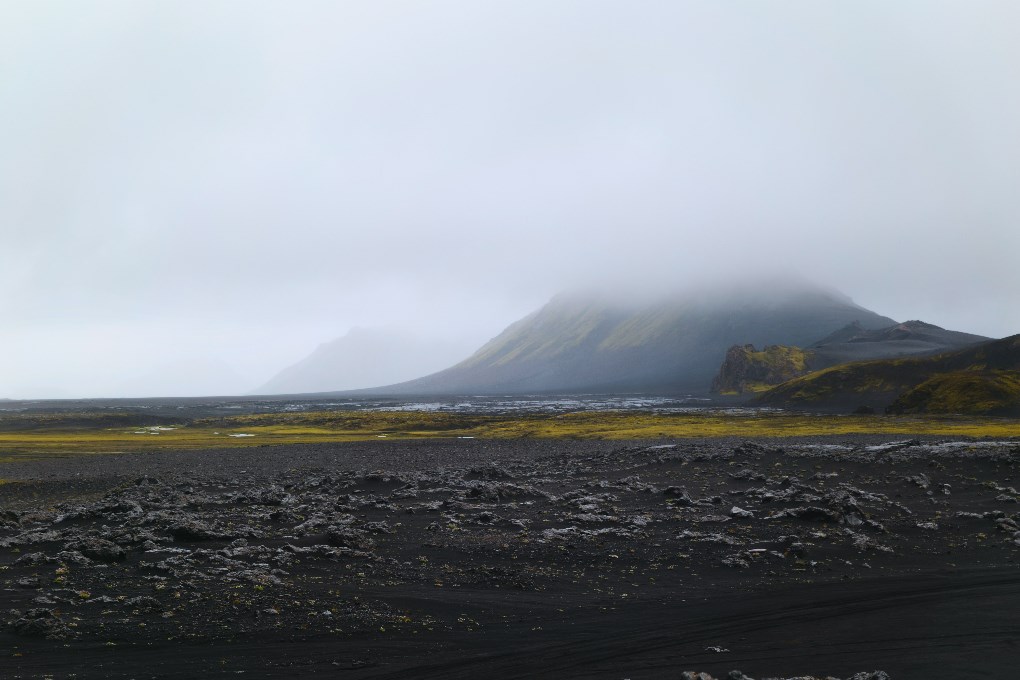
Should I Drive the F-Roads in Iceland?
Wondering if all of the above precautions are worth it? Wondering if there’s really that much to see on the F-roads?
We think that, if you’re an adventurous traveller or if you love the outdoors, you’ll definitely find all of the precautions and preparations worth it. The F-roads boast some of the most beautiful scenery in the country, with some of the fewest crowds. You’ll definitely leave with travel memories that you’ll be talking about for years to come.
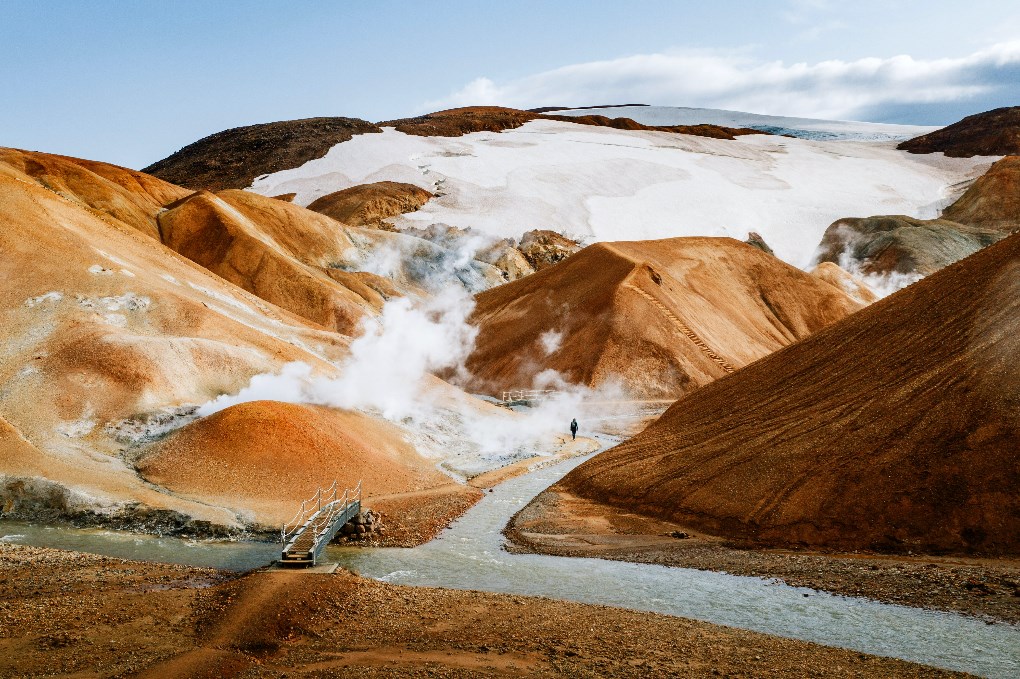
Are Iceland F-roads worth it?
If you read all of the above and are feeling a little nervous about the possibility of driving on Iceland’s F-roads, don’t be scared. While the F-roads do require some preparation and precautions, they are entirely worth the experience. For any adventure traveller who wants to see the remote, hidden gems of Iceland, the F-roads are the only way to go.
But before you can see and experience it all, you’ll need the right rental car for your adventures. Lava Car Rental can help you out with a spacious, comfortable 4x4 vehicle that’s ready to tackle even the toughest terrain.




